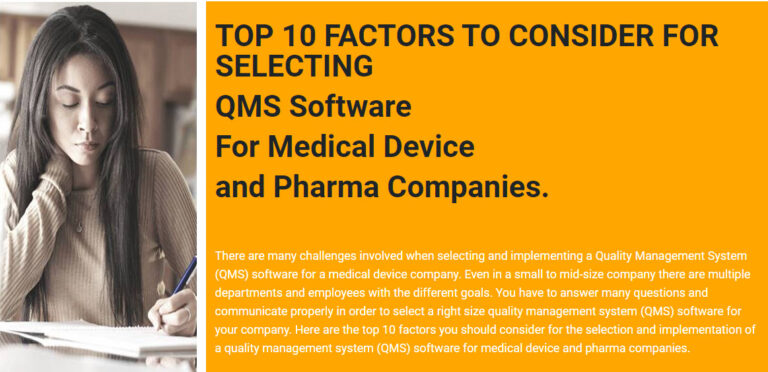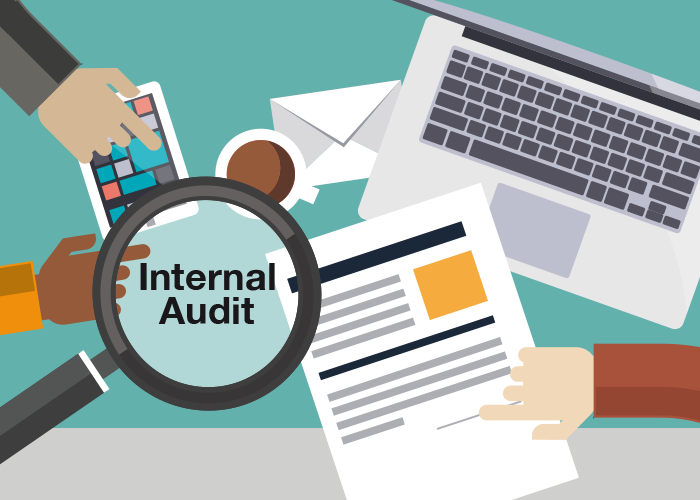# Top 10 FDA GMP Requirements Getting Pharmaceutical Companies in Trouble
Recent warning letters show what FDA inspectors are focusing on. Here’s what you need to fix.
FDA inspectors issued 257 citations across the top 10 GMP violations in FY 2023. That’s 257 facilities that got written up for the same issues. Over 50% of all FDA citations in 2024 related to inadequate procedures. The top three violations alone account for nearly half of all citations.
What does this mean for you?
If you’re making the same mistakes as everyone else, you’re likely to get caught. The good news is, we now know exactly what FDA is looking for.
Here are the real numbers from recent warning letters (FY 2023-2025). We’ll show you what’s going wrong and how to fix it before FDA shows up at your door.
Quick Facts:
- Average deviation investigation cost: $25,000 – $55,000
- Batch rejection losses: $1-2 million per incident
- Import Alert 66-40 can block all shipments to U.S. market
- Warning letters are publicly posted (reputation damage)
- Reinspection typically occurs 9-24 months after warning letter
Here are the Top 10 GMP Requirements You Need to Fix
1. Quality Control Unit Responsibilities (21 CFR 211.22)
The issues:
-
- No designated quality control unit (yes, some companies have NO QC unit at all)
- QC unit exists but has no written procedures defining responsibilities
- Quality decisions being made by production personnel
- QC lacks authority to reject materials or products
- No documentation showing QC approved batch release
Why this keeps happening:
In small companies, everyone wears multiple hats. Quality gets mixed with production. Or worse, production makes the quality decisions because they have deadlines to meet. (We all know how that ends)
What FDA expects:
The QC unit must have authority to approve or reject all components, containers, closures, in-process materials, packaging, labeling, and drug products. Not just review them – approve or reject them. If production can override QC, you don’t have a real quality unit.
Quick Solution:
Create an organizational chart showing QC is separate from production. Write a procedure listing QC responsibilities. Train everyone.
Problems with quick solution:
-
- Organizational charts get outdated
- Procedures sit on shelf, nobody follows them
- When there’s pressure to ship, old habits return
Better Solution:
Build real QC authority into your system:
-
- Establish QC unit in writing with documented responsibilities (21 CFR 211.22 requires this)
- Give QC the authority to approve/reject everything before it moves to next step
- Set up electronic batch release that requires QC approval before shipping
- Make QC independent – don’t have them reporting to production
- Document QC reviews and approvals for every batch
How to check if you’re compliant:
Can you show the last 10 batches were approved by QC before release? If you can’t produce those records right now, you have a problem.
- Written Procedures for Production and Process Control (21 CFR 211.100(a))
38 citations in FY2023 – Tied for #1 most cited violation
The issues:
-
- No written procedures for production operations
- Procedures exist but are too vague (just says “mix well” – how well? for how long?)
- Procedures not validated – nobody proved they actually work
- Common in OTC manufacturers who never did process validation
- Everyone does it differently based on their interpretation
Here’s what we see in facilities:
“We’ve always done it this way” is not a procedure. Neither is having the experienced operator show the new person what to do. When that operator leaves, your process leaves with them.
What FDA found in recent citations:
-
- Procedures don’t include critical process parameters
- No acceptable ranges specified (mix at “room temperature” – is that 15°C or 30°C?)
- Procedures not detailed enough for someone to follow
- No validation showing the procedure produces quality product consistently
Quick Solution:
Write down what people are doing. Call it an SOP. Train everyone. Put it in a binder.
Problems with quick solution:
-
- Written procedures don’t match what actually happens
- Too generic – doesn’t specify critical parameters
- Never validated – no proof it works
- Deviations happen daily but nobody documents them
Better Solution:
Create procedures that actually work:
For each production operation:
-
- Write step-by-step procedures with critical parameters and acceptable ranges
- Include equipment settings, times, temperatures, mixing speeds
- Validate the procedure – prove it produces quality product every time
- Make sure procedures are detailed enough that a trained person can follow them
- Set up document control with version management
- Require written justification for any deviation from procedure
- Link procedures to training records (can’t work on a process until trained)
Example of good procedure:
Instead of: “Mix until uniform”
Write: “Mix at 60 ± 5 RPM for 15 ± 2 minutes until visual inspection shows no unmixed material. Check mixing paddle for buildup every 5 minutes.”
How to check if you’re compliant:
Take your procedure for your most common product. Hand it to a qualified person who has never made that product. Can they follow it successfully? If not, your procedure is not adequate.
- Testing and Approval of Components, Containers, and Closures (21 CFR 211.84)
49 citations in FY2023 – This is 69% of all warning letters. Highest ever recorded.
This one exploded in FY2023. FDA is serious about incoming material testing.
The issues:
-
- Relying only on supplier certificates of analysis (no in-house testing)
- Not testing for toxic impurities (methanol, DEG, EG)
- No identity testing for each lot of raw materials
- Using unqualified suppliers
- Accepting ethanol without testing for methanol content
- Accepting glycerin without testing for diethylene glycol (DEG) or ethylene glycol (EG)
Why this got worse:
During COVID, lots of companies started making hand sanitizer. They bought ethanol and glycerin from new suppliers. They trusted the certificates. Some of that material was contaminated. People died from DEG poisoning in the past. FDA remembers.
What FDA found:
In 49 out of 71 warning letters, companies were not testing incoming materials properly. That’s 69% of all warning letters. This is the #1 issue right now.
Real example from warning letter:
“You failed to perform adequate identity testing for each component lot used in production of your hand sanitizer drug products, including ethanol, your active pharmaceutical ingredient. Additionally, your active pharmaceutical ingredient, ethanol, is not tested for methanol content.”
Quick Solution:
Start testing everything in-house. Trust nobody.
Problems with quick solution:
-
- Testing is expensive
- Takes time
- Need qualified lab and validated methods
- Still need to qualify suppliers
Better Solution:
Risk-based incoming material control:
For all raw materials:
-
- Perform at least one identity test on each lot before use (21 CFR 211.84(d)(1) requires this)
- Never rely only on supplier certificate for critical quality attributes
- Qualify suppliers through audits and capability assessment
For critical materials, test for toxic impurities:
-
- Ethanol and isopropanol – test every lot for methanol
- Glycerin, propylene glycol, sorbitol – test for DEG and EG
- Water – verify USP quality standards
- Any material from new supplier – full testing until qualified
Set up testing program:
-
- Write specifications for each incoming material
- Develop or validate test methods
- Document all test results
- Hold material in quarantine until testing complete and approved by QC
- Maintain testing equipment in qualified status
For supplier qualification:
-
- Audit critical suppliers
- Review their testing methods and results
- Document supplier quality agreements
- Periodic re-qualification
How to check if you’re compliant:
Look at your last 10 lots of ethanol or glycerin. Did you test them for methanol/DEG/EG? Or did you just accept the supplier certificate? If you only have certificates, you’re at risk for citation.
- Production Record Review and Investigation of Discrepancies (21 CFR 211.192)
30 citations in FY2023 – This one shows up every year in top 5
The issues:
-
- Releasing product despite out-of-specification (OOS) test results
- Not investigating why batch failed specifications
- Superficial investigations (“operator error” without proof)
- Invalidating OOS results without scientific justification
- No retrospective review to catch all OOS incidents
What FDA keeps finding:
Companies release batches even when test results fail. Or they retest until they get passing result, then ignore the failing results. Or they blame “lab error” without any evidence.
FDA’s standard language in citations:
“You do not provide a retrospective review to ensure that you have fully identified and thoroughly investigated all OOS results and discrepancies.”
This violation has been in top 5 for years. Industry still struggles with it.
What happens if you get cited for this:
-
- Import Alert 66-40 – blocks all U.S. shipments until fixed
- In EU, triggers Rapid Alerts to all competent authorities
- Often leads to Class I or II recalls
- Average investigation cost: $25,000 – $55,000 per incident
- Batch rejection losses: $1-2 million
Quick Solution:
Write a procedure for OOS investigations. Train lab personnel. Document investigations.
Problems with quick solution:
-
- Investigations still superficial
- Pressure to release product leads to shortcuts
- No root cause analysis
- Same problems repeat
Better Solution:
Implement structured OOS investigation process:
When OOS result occurs:
-
- Quarantine batch immediately (within 1 working day)
- No shipping until investigation complete
- Document everything in real-time
Phase I – Laboratory Investigation (complete in 3 working days):
-
- Check calculations and transcriptions
- Review instrument calibration status
- Verify system suitability data
- Re-test from original sample preparation (not new sample)
- If proven lab error – document, retrain, close
- If no lab error found – escalate to Phase II
Phase II – Manufacturing Investigation:
-
- Review batch manufacturing records
- Check raw materials used
- Assess environmental conditions during production
- Review equipment performance logs
- Interview operators
- Look for any deviations during manufacturing
After investigation:
-
- Define CAPA (corrective and preventive actions)
- Get QA approval for batch disposition
- Never release batch with unexplained OOS
- Implement preventive actions
- Verify CAPA effectiveness
Critical rule from FDA:
You cannot invalidate OOS result without documented proof of laboratory error. “Lab error” without evidence is not acceptable.
How to check if you’re compliant:
Review your OOS investigations from last year. For each one marked “lab error” – is there actual evidence? Or just assumption? If no evidence, your investigations are not adequate.
- Testing and Release for Distribution (21 CFR 211.165)
27 citations in FY2023
The issues:
-
- Releasing product before testing complete
- No testing program for finished products
- Test methods don’t detect critical quality attributes
- Missing stability testing
- No specifications for release
What’s happening:
Companies ship product before test results come back. Or they have inadequate testing that doesn’t check for important quality attributes. FDA is focused on OTC manufacturers and dangerous contaminants.
Common scenario:
Production schedule says ship Friday. Test results won’t be ready until Monday. Ship anyway. (Bad idea)
Quick Solution:
Write procedure that says don’t release until testing done. Train everyone.
Problems with quick solution:
-
- Production pressure overrides procedure
- When there’s urgent order, exceptions get made
- “Just this once” becomes routine
Better Solution:
Set up proper release testing program:
Before any batch ships:
-
- Complete all release testing
- Verify results meet specifications
- Get QC approval documented
- Hold product in quarantine until approved
Testing requirements:
-
- Identity testing
- Strength/potency testing
- Purity testing
- Quality attributes (appearance, dissolution, etc.)
- Stability testing (ongoing program)
- Microbiological testing where applicable
For test methods:
-
- Use validated analytical methods
- Document method accuracy, sensitivity, specificity
- Maintain qualified test equipment
- Use appropriate reference standards
- Include complete data in test records
Release approval:
-
- QC must review all test data
- QC approves or rejects batch
- Document approval with signature and date
- No releases without QC approval
In your system:
-
- Set up quarantine status in inventory system
- Batch cannot ship until QC changes status to approved
- Electronic approval better than paper (eliminates “I thought it was approved”)
How to check if you’re compliant:
Check last 10 batches shipped. For each one, can you show all testing was complete and QC approved before shipping? If any batch shipped before testing complete, you have a problem.
- Laboratory Controls (21 CFR 211.160(b))
Approximately 5% of all FDA observations
The issues:
-
- Laboratory records incomplete or missing raw data
- Test methods not validated
- Poor documentation of test results
- No reference standards or improper storage
- Equipment not calibrated
What we see in labs:
Test results recorded on scratch paper, then transcribed later. Original calculations thrown away. Equipment used without calibration. Reference standards expired. (All real examples from warning letters)
Quick Solution:
Train lab personnel on documentation. Create templates for test records.
Problems with quick solution:
-
- Still missing data
- Transcription errors happen
- Hard to verify what actually happened during test
Better Solution:
Implement proper laboratory controls:
For test methods:
-
- Validate all analytical methods per ICH guidelines
- Document accuracy, precision, specificity, linearity, range
- Keep validation records
- Revalidate when method changes
For laboratory records:
-
- Record all data directly into lab notebooks or LIMS
- Include raw data, calculations, instrument printouts
- No transcribing – record once at source
- Sign and date all entries
- Keep all data, including failed runs or unexpected results
For equipment:
-
- Qualify all laboratory equipment (IQ, OQ, PQ)
- Calibrate per schedule using traceable standards
- Maintain calibration and maintenance records
- Document equipment use logs
For reference standards:
-
- Use appropriate reference standards for each test
- Store per requirements (temperature, light, humidity)
- Track expiration dates
- Document receipt, storage, and usage
For laboratory procedures:
-
- Write detailed test procedures
- Include all critical steps and acceptance criteria
- Train analysts on procedures
- Document training and competency assessment
How to check if you’re compliant:
Pull a test record from last month. Does it include all raw data? Can you trace every calculation? Are instrument calibration records current? If you can’t find complete records, you have gaps.
- Computer System Controls (21 CFR 211.68(b))
Approximately 7% of all FDA citations annually
The issues:
-
- Not checking computer input and output for accuracy
- Generic user accounts (can’t tell who did what)
- Audit trails disabled or not reviewed
- Data being deleted or altered without record
- Uncontrolled data transformations
The data integrity problem:
FDA inspectors are finding discarded original records, disabled audit trails, generic logins, and altered data. This is serious. When data can be changed without detection, they can’t trust anything.
Real example from warning letter:
“Serious quality assurance deficiencies, such as discarded original cGMP records found stacked in a bag underneath a vehicle and in a nearby trash can.”
What happens with manual systems:
Excel spreadsheets with no version control. Anyone can change data. No record of who made changes or when. Original data gets overwritten.
Quick Solution:
Turn on audit trails. Tell everyone to use their own login.
Problems with quick solution:
-
- People share passwords anyway
- Audit trails generate too much data to review
- Nobody actually checks the audit trails
- Still using Excel for critical data
Better Solution:
Implement proper computerized system controls:
For system validation:
-
- Validate all GMP computer systems before use
- Document intended use and critical functionality
- Test that system works as intended
- Keep validation records
For access control:
-
- Individual user accounts only (no generic “QC” or “Lab” accounts)
- Unique passwords for each person
- Access levels based on job function
- Document who has access to what
For data integrity (ALCOA+ principles):
-
- Attributable – know who created/changed data
- Legible – can read and understand data
- Contemporaneous – recorded when activity performed
- Original – first recording or certified copy
- Accurate – correct and complete
- Plus: Complete, Consistent, Enduring, Available
For audit trails:
-
- Enable audit trails for all critical data
- Configure to capture: who, what, when, why for all changes
- Review audit trails regularly
- Investigate any unusual patterns
- Cannot disable audit trails without documented justification
For data security:
-
- Regular backups with documented procedures
- Test backup recovery
- Secure data storage
- Control who can delete data
- Document all data transfers or transformations
For changes:
-
- Use change control for all system changes
- Validate after changes
- Document impact assessment
How to check if you’re compliant:
Look at your LIMS or ERP system. Can you show who entered the last batch test results? Can you see if anyone changed those results? If you can’t answer these questions, your computer system controls are inadequate.
- Equipment Cleaning and Maintenance (21 CFR 211.67(b))
The issues:
-
- Equipment not cleaned between products
- No cleaning validation
- Cleaning procedures don’t work
- No cleaning schedules or logs
- Cross-contamination between products
What goes wrong:
Product A residue remains on equipment when making Product B. Potent compounds contaminate other products. Allergens transfer. (This causes recalls and patient harm)
Real risk:
Someone with peanut allergy takes medication that was made on equipment that previously processed peanut-containing product. Equipment wasn’t cleaned properly. Patient has allergic reaction.
Quick Solution:
Create cleaning schedule. Train operators to clean equipment. Document in logs.
Problems with quick solution:
-
- Cleaning procedure not validated – doesn’t actually remove residue
- Visual inspection only – contamination not always visible
- Logs show cleaning done but was it effective?
Better Solution:
Implement validated cleaning program:
Develop cleaning procedures:
-
- Written procedure for each piece of equipment
- Specify cleaning agents, concentrations, contact time
- Include disassembly steps where needed
- Define rinse requirements
Validate cleaning effectiveness:
-
- Worst-case validation studies
- Test hardest-to-clean products
- Test hardest-to-clean locations on equipment
- Use analytical methods (swab testing or rinse samples)
- Set acceptance limits for residues
- Document validation results
For ongoing cleaning:
-
- Follow validated procedures
- Document each cleaning in equipment log
- Include: date, product cleaned, who cleaned, cleaning verification
- Verify cleaning visually and with testing (swab or rinse)
- Hold equipment in “clean” status until next use
For maintenance:
-
- Preventive maintenance schedule for all equipment
- Document maintenance activities
- Calibrate equipment per schedule
- Keep maintenance records
For equipment logs:
-
- Document all equipment use
- Include product made, batch number, date, operator
- Note any problems or unusual observations
- Review logs regularly
How to check if you’re compliant:
Look at equipment used for your top 3 products. Is cleaning validated? Are cleaning logs complete for last month? Have you tested to verify cleaning removes residues? If you only have visual inspection, that’s not enough.
- Control Procedures to Monitor Performance (21 CFR 211.110(a))
The issues:
-
- No in-process testing during manufacturing
- Not monitoring critical process parameters
- No process validation
- Equipment not qualified
- Can’t demonstrate process consistently produces quality product
What’s missing:
Companies make batches but don’t check anything until final testing. If problem occurs during production, they don’t catch it until batch is complete. Then entire batch scrapped.
The shift in FDA thinking:
FDA used to accept “make 3 batches, test them, if they pass you’re validated.” Not anymore. They want continuous process verification – ongoing monitoring to ensure process stays in control.
Quick Solution:
Add some in-process checks. Sample and test during production.
Problems with quick solution:
-
- Don’t know which parameters are critical to test
- No acceptance criteria defined
- Don’t track trends over time
- Reactive instead of preventive
Better Solution:
Implement process monitoring and control:
Identify what to monitor:
-
- Critical process parameters (CPPs) – temperature, pressure, time, mixing speed, etc.
- Critical quality attributes (CQAs) – characteristics that affect product quality
- In-process material specifications
Set up monitoring:
-
- In-process testing at key manufacturing stages
- Define acceptance criteria for each checkpoint
- Document all monitoring results
- Trend the data to see patterns
For process validation:
-
- Prove your process works consistently
- Not just 3 batches – use statistical approach
- Continued process verification after validation
- Revalidate when process changes
For equipment:
-
- Qualification status (IQ, OQ, PQ) must be current
- Document equipment performance
- Preventive maintenance per schedule
- Address equipment failures promptly
Use the data:
-
- Statistical process control (SPC) charts
- Identify adverse trends before they cause failures
- Investigate when parameters drift toward limits
- Adjust process to stay in control
How to check if you’re compliant:
For your main product, can you show which process parameters are critical? Do you monitor them? Do you have data showing process is in control over time? If you can’t show this data, your process monitoring is inadequate.
- Personnel Training (21 CFR 211.25(a))
The issues:
-
- Employees not trained for their job functions
- No documented training records
- Training done but competency not verified
- New employees working without training
- No ongoing training when procedures change
Why this keeps happening:
Training takes time. Production needs people on the floor. “Just watch Joe do it” becomes the training program. When Joe leaves, his knowledge leaves too.
What FDA expects:
People must have appropriate education, training, AND experience for their jobs. Not just education – you have to train them AND verify they can actually do the work.
Training is not just “sign the roster” – you must verify people understood and can perform the work correctly.
Quick Solution:
Create training curriculum. Have everyone attend training. Keep attendance records.
Problems with quick solution:
-
- Attendance doesn’t prove competency
- No verification people can actually perform tasks
- Training materials outdated
- No refresher training
- Quality culture not addressed
Better Solution:
Build comprehensive training program:
For training program:
-
- Identify job functions and required training for each
- Create training curriculum covering:
– GMP principles and regulations
– Company quality policies
– Specific procedures for their work
– Equipment operation
– Safety and hygiene
– Documentation requirements
For new employees:
-
- Complete training before performing work
- Verify competency through testing, demonstration, or observation
- Document initial qualification
- Cannot work independently until qualified
For training delivery:
-
- Use qualified trainers
- Keep training materials current
- Update training when procedures change
- Provide training in language people understand
For training records:
-
- Document all training with:
– Employee name
– Date of training
– Topic/procedure trained
– Trainer name
– Competency assessment results
– Signature of employee and trainer
-
- Maintain records throughout employment
For ongoing training:
-
- Refresher training at appropriate intervals
- Training when procedures change
- Training after deviations or errors
- GMP awareness training annually
For quality culture:
-
- Train on why quality matters, not just how to follow procedures
- Emphasize patient safety impact
- Encourage reporting problems
- Management commitment to quality
How to check if you’re compliant:
Pick 3 operators in your production area. For each one, can you show training records for every procedure they perform? Can you show they were qualified (competency verified)? If records are missing or incomplete, you have gaps.
What’s the Pattern Here?
Over 50% of all FDA citations in 2024 related to inadequate procedures. Look at the list above – almost every violation involves either missing procedures, inadequate procedures, or not following procedures.
The documentation problem runs through everything:
- QC responsibilities not documented
- Production procedures not written or too vague
- Investigations not documented
- Training not recorded
- Computer system controls not documented
- Equipment cleaning not logged
In pharmaceutical manufacturing, if it’s not documented, it didn’t happen. FDA uses your records to reconstruct what happened. Missing records = they assume you didn’t do it.
Why procedures matter:
- Without procedures, everyone does it differently
- New people don’t know what to do
- Can’t investigate deviations if you don’t know what’s correct
- Can’t prove you followed GMP requirements
Documentation is your proof of compliance. When FDA asks “How do you control this?” – your procedures and records are the answer.
What to Do About It
Here’s practical approach to fix these issues:
- Check where you stand now
Review each of the 10 requirements above:
-
- Do you have written procedures?
- Are they detailed and validated?
- Do people follow them?
- Can you find complete records?
Be honest. If you’re hoping inspector won’t ask about something, that’s your weak point.
- Focus on your biggest risks first
Not all 10 violations apply equally to everyone:
-
- OTC manufacturer – component testing (211.84) is probably your biggest risk
- Contract manufacturer – QC oversight (211.22) is critical
- Everyone – production procedures (211.100) and OOS investigations (211.192)
Fix the issues most likely to get you cited first.
- Build proper documentation system
You need:
-
- Document control system with version management
- Change control process
- Training management
- Deviation and CAPA management
- Batch record system
- Laboratory data management
Manual systems using paper and filing cabinets don’t scale. When FDA asks for “all OOS investigations from last 2 years” – can you produce them quickly?
Better approach:
Electronic Quality Management System (eQMS) that:
-
- Manages all documents with version control
- Tracks training and qualifications
- Routes approvals automatically
- Sends reminders when tasks overdue
- Generates reports for metrics
- Maintains audit trail of all changes
- Fix the quality culture
Technical fixes aren’t enough. If your culture is:
-
- Production pressures override quality concerns
- Bad news doesn’t get reported
- Deviations get hidden
- “Ship it anyway” mentality
Then procedures and systems won’t help. You need management commitment to quality being first priority.
- Use consultants when needed
In 60 out of 94 warning letters from FY2023, FDA explicitly recommended hiring qualified consultant. (That’s 64% of warning letters)
When to get consultant:
-
- After receiving 483 or warning letter
- For major remediation projects
- When you lack expertise in specific area
- To get independent assessment
External expert can see problems you’ve normalized. They’ve seen what works at other companies.
Prepare for reinspection
If you got 483 or warning letter:
-
- Reinspection typically in 9-24 months
- Build evidence file showing what you fixed
- Document every corrective action
- Have records ready to show inspector
- Consider requesting GDUFA Post-Warning Letter Meeting for FDA feedback
- Share lessons across your company
If you operate multiple facilities:
-
- Share 483s and warning letters with all sites
- One site’s mistake teaches others
- Implement fixes company-wide, not just at cited facility
- Conduct internal audits checking for same issues
- Monitor these metrics
Track and trend:
-
- Number of deviations by type
- OOS results and investigation times
- Training completion rates
- CAPA closure rates
- Batch rejection rates
If metrics show problems, fix root causes. Don’t wait for FDA to find them.
What’s Coming Next
FDA enforcement trends for next few years:
Data Integrity Focus:
Expect more scrutiny of electronic records, computer system validation, audit trails. As industry digitizes, FDA will focus more on data integrity.
Supply Chain Transparency:
Component testing citations (211.84) hit record high in FY2023. This won’t decrease. Expect continued focus on incoming material testing, especially from international suppliers.
Quality Metrics:
FDA’s draft Quality Metrics Guidance signals shift to quantitative compliance assessment. You may need to report metrics like:
- OOS rates
- Invalidated OOS rates
- Lot rejection rates
- Deviation rates
Risk-Based Inspections:
FDA uses data analytics to identify high-risk facilities. Companies with poor compliance history or quality metrics get inspected more.
New Technologies:
As continuous manufacturing, AI, advanced therapies become common – expect new guidance and regulatory requirements.
Bottom Line
These 10 GMP requirements aren’t arbitrary. They’re fundamental principles of pharmaceutical quality:
- Know what you’re using (component testing)
- Control how you make it (procedures and process controls)
- Test to verify quality (laboratory controls and release testing)
- Investigate problems (OOS investigations)
- Train your people
- Document everything
Companies that excel at GMP compliance have:
- Management commitment to quality
- Robust documented procedures
- Trained competent people
- Adequate resources
- Proactive problem identification
- Continuous improvement mindset
No company is perfect. Quality systems are built by humans. What matters is:
- How quickly you identify problems
- How thoroughly you investigate root causes
- How effectively you prevent recurrence
Don’t wait for FDA to find your problems.
These 257 citations across 10 requirements represent 257 facilities that waited. Proactively assess your compliance. Address gaps. Build quality into operations.
Because GMP compliance isn’t about checking boxes for inspectors. It’s about patients who depend on your products. Every procedure you write, every batch you test, every investigation you conduct serves one purpose: ensuring medications leaving your facility help rather than harm.
Take Action Now
Immediate steps:
- Download latest FDA warning letters for your product type
- Schedule internal audit focused on these 10 requirements
- Review your CAPA system – are investigations thorough?
- Check your training program – records complete?
- Verify component testing covers toxic impurities
**Resources:**
- FDA Warning Letters: www.fda.gov/inspections-compliance-enforcement-and-criminal-investigations/compliance-actions-and-activities/warning-letters
- FDA Guidance Documents: www.fda.gov/regulatory-information/search-fda-guidance-documents
- 21 CFR Parts 210 & 211: Current Good Manufacturing Practice regulations
Questions about implementing these requirements? Need help preparing for FDA inspection?
This information is based on publicly available FDA data and should not be construed as legal or regulatory advice. Consult qualified regulatory professionals for guidance specific to your situation.













